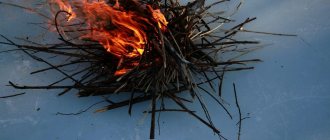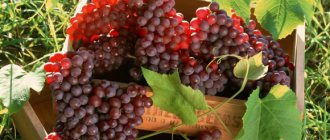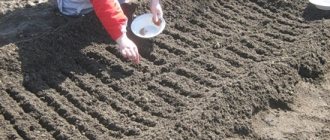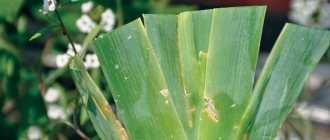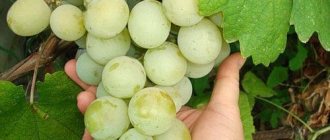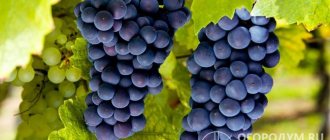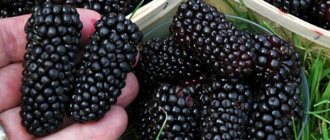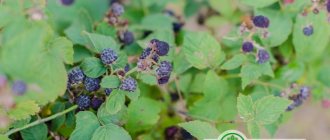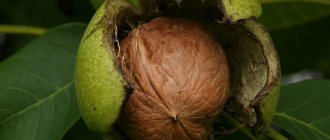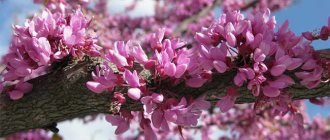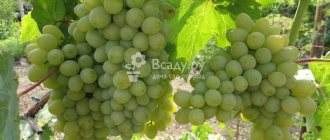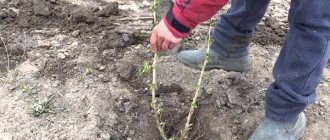The purpose of covering blackberries for the winter
The main goal and purpose is to protect the berries from frost and wind during the snowless period. Even if winter is snowy from the first days of its onset, covering blackberries is necessary in order to protect the plant from a number of problems:
- Accumulation of moisture with a simultaneous decrease in temperature. These are one of the main factors that lead to freezing of buds and branches.
- On thaw days, when the snow melts, a lot of water accumulates in the ground. The roots cannot fully absorb its volume. Due to excess moisture, the root system suffocates, begins to rot and dies.
- The melting of snow that has stuck to the blackberry branches, followed by cold winds or frosts, leads to the formation of an icy crust.
Blackberry bush in destructive ice
Additional Information! Despite the fact that snow is a natural insulation for plants, which can protect them from bad weather, it rarely lies all winter. The slightest thaw can be detrimental to blackberries.
Terms of insulation
Covering the plant should begin with the first serious frost. The blackberry itself is quite cold-resistant; it can tolerate down to -15 °C without loss, but only if the temperature decrease was gradual. If the frost comes suddenly, indicators from -7 °C to -10 °C can lead to the death of the plant.
The recommended time is the last days of October and the first weeks of November, when the air cools to -5 °C. Each region, depending on the weather and climatic conditions, has its own individual periods for preparing blackberries for insulation.
Attention! There is no need to rush to insulate blackberries with the onset of the first, minor frosts, which are always followed by temporary warming. The plant needs to breathe, and the roots need an influx of oxygen. If you wrap blackberries too early, these premature actions can harm the plant.
Hasty actions to early wrap blackberries with warm materials can lead to the following problems:
- If there is no snow, and the winter turns out to be quite warm, with positive indicators, which are aggravated by the heat under the frame, the blackberry will not go into a dormant state, its vegetative development will continue. Due to heat and moisture, the amount of oxygen decreases. The bush suffocates and even the slightest cold will cause the plant to die.
- Excessive insulation, which creates a greenhouse effect, provokes the development of pathogenic microflora. Developing microorganisms can infect the bush with various diseases, which can cause it to die.
To prevent overheating of blackberries, it is best to use non-woven materials to protect them from cold weather. Even if winter does not come immediately or the thaw period drags on, there is no chance that the plant will become steamed.
Additional Information! Not only its premature wrapping, but also late opening can destroy a plant. You shouldn’t wait until mid-spring to free the shrub from its insulation. This should be done immediately after the extreme cold subsides.
Selection of materials for insulating blackberries
Before covering the blackberries, you need to choose a suitable material for this - natural or artificial.
Natural raw materials
It is more comfortable for blackberries to overwinter under natural raw materials, which provide the roots with breathing and ventilation. This type includes:
- Snow. You can use precipitation for insulation only if the winter is snowy, and the snow fell at the very beginning, covering the root system of the plant with a dense, thick blanket.
- Vegetable tops. It can protect blackberries from changeable winter weather. The tops must first be dried. You need to choose only a healthy product, without any traces of previous diseases.
- Hay, straw. These materials are convenient because they can be easily and quickly laid out and then put away as well. There is only one drawback: the hay can attract rodents, which can severely damage the blackberry branches.
Using spruce branches is the best choice among natural materials
- Foliage. Fallen leaves are one of the most common natural insulation materials.
- Sawdust. They can only be used if it is not possible to use other materials. Sawdust increases the acidity of the soil; they absorb a lot of moisture, which is why insects will begin to grow in the ground.
- Lapnik. The branches of coniferous trees allow air to pass through well, and insects and rodents do not like their smell, so the blackberry will be reliably protected from them.
- Seed husk. The only disadvantage of the material is its search and collection, because you will need a lot of husks.
Attention! Foliage can only be used from ornamental trees. Leaves from fruit varieties will immediately attract the unwanted attention of insects - pests.
Natural materials have many advantages, one of the main ones is that they provide free air flow to the roots.
How to cover
Covering materials are divided into organic: straw, spruce branches, foliage, tops and industrial: spunbond, agrofibre. Each type has its own advantages and disadvantages.
Did you know? Blackberries have antiviral, antibacterial and anticancer properties due to their high levels of ellagic acid.
Agricultural materials
Non-woven covering materials are made from synthetic fibers. They differ not only in the type of starting material, but also in density. To protect the shrub from frost, choose a density of 17–50 g/m².
The advantage of such synthetic fabrics is that they are permeable to air. No condensation is created under them. They are indifferent to pests and rodents that attack organic shelters. For winter shelters, non-woven covering material can be rolled up in several layers.
Important! Give preference to white materials, they reflect sunlight better. This means that the air in the shelter will not warm up too sharply.
Available means
Available means include everything that is available at the dacha “here and now.”
It could be:
- the soil;
- hay;
- vegetable tops;
- leaves.
Natural
Most of the available materials are natural. They are derived from plants. After processing grain crops, what remains is rice husks, chopped corn cobs, and straw. The woodworking industry is a source of wood chips and sawdust. You can collect spruce branches or peat from the forest, and leaves, plant tops, and grass from the home garden.
Not all materials are worth using. Leaves or tops can be a source of disease. And hay is also a potential source of weeds. In addition, blackberry bushes are equipped with thorns. In order not to waste time removing tops or hay from them, use something that is easy to place and then remove, for example, spruce branches. And also those materials that will be safe for your garden: straw, wood chips, buckwheat husks or seeds.
Synthetic
All non-woven films are of synthetic origin. They are made from polypropylene fiber. Spandond is one of the best materials for covering bushes, but not the only one. There are a number of agrofabrics that can be used for the same purpose: agril, agrospan, agrotex.
Spunbond is available in black and white. White is used for stretch covers, black is used for mulching the soil . No weeds grow under it. And it keeps plants covered well during wintering. The material is considered the best in terms of price and quality ratio. Its properties: it allows moisture and air to pass through well, condensation does not form under it, the sun's rays pass through it well, and it can withstand frosts down to -50°C. To create a good microclimate for the bushes, it is recommended to stretch the material over the frame. Upright shoots can simply be wrapped with it.
Find out when to remove winter cover from blackberries.
Ordinary polyethylene film is also suitable for constructing shelters. The main thing is to choose one that can withstand gusts of wind and snowfall. Its density should be about 42–60 g/m². You can cover the bushes with reinforced film. It is denser, can withstand any wind and will last for several seasons. In case of mechanical damage, the size of the hole in it will be limited by the cell, or more precisely by the reinforcing material that creates the boundaries of the cells. But its cost will be higher than that of ordinary film.
Another synthetic material is geotextiles. It is also created from polymer fibers. It can perfectly protect bushes from frost. Thanks to its good throughput, the vines under it do not become damp, and mold does not form in the shelter. The method of its application does not differ from that of spunbond.
Another covering material is lutrasil. They cover greenhouses and are used to protect bushes from frost. The recommended density of lutrasil is 50–60 g/m². It performs all the same functions as spunbond, but is more susceptible to ultraviolet radiation and will serve the gardener for only a couple of years. Its undeniable advantage is its relatively low cost.
Preparing for insulation
Before covering the blackberries for the winter, they need to be put in order. The timing of all manipulations depends on the climate in a certain area and the plant variety: early blackberries - 2-3 weeks of September, late berries - October. This process includes:
- Water the plant abundantly. The culture needs to be provided with enough moisture.
- Sanitary cleaning. Blackberries are thinned out by trimming bad and damaged shoots and removing excess branches.
- Removing creeping branches from supports, winding them up or laying them on the ground.
- Fertilizing blackberries with potassium fertilizers.
Attention! Pruning in the fall, before cold weather, involves removing most of the young shoots. Next year, it is enough to leave no more than 7 branches, which will ensure a bountiful harvest.
Removing branches is a responsible process. You need to know which shoots you need to get rid of completely, and which ones you should never touch. Last year's 2-year-old fruit-bearing branches are completely removed, that is, cut to the root without leaving stumps. They are easy to distinguish from young ones: withered flower stalks and dried berries remain on such shoots.
Autumn pruning
In order for the berry bushes to survive the harsh winter without loss, and with the onset of warmth to quickly grow and gain green mass, they must be pruned at the end of the season.
When to prune blackberries in Siberia
Experienced gardeners recommend starting pruning no later than a month before the first frost. During this time, all wounds have time to heal, so they do not affect the winter hardiness of the bush.
However, in some cases, when the onset of winter is predicted earlier, you can prune the berry tree as early as September. You cannot delay this procedure, since pruning is stressful for the bush and if the plant does not recover by the cold weather, it may die.
Which blackberry shoots can and cannot be cut?
When starting pruning, it is important to first carefully inspect each bush and determine which branches need to be removed.
We recommend that you read the Photo and description of feijoa
First of all, you need to cut out dried, diseased, broken, damaged and fruit-bearing shoots, since they do not provide any benefit. In addition, they interfere with the growth of new branches, which negatively affects the yield.
When cutting, you cannot leave stumps - each shoot must be removed as close to the trunk as possible. Therefore, you should use sharp pruning shears. For better healing, the cut areas can be coated with garden varnish or clay mash.
At the next stage, you need to form a crown that will bear fruit well. To do this, leave 6-10 strong, well-developed shoots and remove the rest.
At the end of the pruning, it is necessary to shorten each remaining branch by 7-10 cm. All trimmed parts of the bushes must be collected and burned to prevent the development of diseases and the appearance of rodents that can damage the trunks.
Technique for covering blackberries for the winter
After all the preliminary work has been carried out, you can begin insulating the blackberries with the selected material in the following sequence:
- The shoots must be gently pressed to the ground without pressing too hard. If this cannot be done, the branches must be covered with wooden shields, boards, or use plywood boxes.
- The best option is to build a frame onto which the non-woven material will be stretched. You need to make a canopy so that the fabric does not come into contact with the branches, otherwise it may freeze to them.
- The edges of film, fabric and other materials must be fixed by pressing them to the ground with stones or by pouring soil on top.
Attention! It is recommended to press the branches lowered to the ground with iron clamps. You can make them yourself using strong wire. The width of the staple must be at least 5 cm, otherwise the branch, rising, will pull it out of the ground.
The best option for protection from the cold is the construction of a frame
Features of training in different regions
The optimal period for organizing insulation for a plant before cold weather depends on its variety and where it grows:
- Middle zone, Moscow region. Winters here are moderate, but with sharp temperature changes. The amount of snow varies - there may be too much of it or, on the contrary, there may be little and it does not last long. You can begin insulation from the second week of November, paying attention to the amount and volume of precipitation.
- Siberia. This is a region with long winters. It is recommended to begin covering work here from the beginning of October.
- Ural. Winter here is harsh, so even winter-hardy blackberry varieties must be reliably protected. You need to start work no later than 1-2 weeks of October. The structure must be capital, from several layers. For example, you can cover the blackberries first with spruce branches and then with agrofibre on top.
- Leningrad region. Here the winter is average in terms of cold, quite snowy, which can lead to the problem of high humidity. Work should begin in November, depending on forecasts for the coming heavy rainfall.
In cold regions, the shrub needs double protection
Despite the recommended dates for work to protect blackberries from the cold, nature can always throw an unexpected surprise. Therefore, you should first of all take into account weather forecasts and focus on them.
In order for blackberries to delight you with a bountiful harvest, they need to be protected for the winter from the cold and high humidity of melting snow. To do this, you need to wrap the berry bush with natural or synthetic materials that will help retain heat inside and prevent the shoots from freezing, and with it the death of the entire plant.
Do frost-resistant varieties need to be covered?
Blackberry varieties are divided into frost-resistant and non-frost-resistant (they need shelter for the winter). The first species tolerates winter frosts well and does not die at temperatures of -20°C. Wintering without shelter will most likely negatively affect the condition of the bush. If a gardener is interested in a rich harvest, he even covers frost-resistant varieties.
REFERENCE. It is believed that in the southern regions, with mild winters, covering blackberry bushes has a positive effect on yield.
Spring frosts can negatively affect the bushes if it is opened early. Basically, they do not affect the health of the plant if the ground is warm enough and in this case there is no need to cover the blackberries, since the plant blooms quite late.
